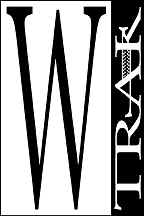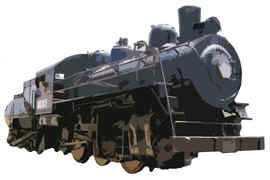

Event Planning
![]()
![]() A modular railway is a significant investment to design and construct. Sharing it with others is an investment too. But in the right context, that engagement is really rewarding - for children and their families, for the organizer and community...and for you. There are a wide range of events where a modular wooden railway can be integrated and many ways to configure your footprint in a public space. Following are some insights and suggestions based on firsthand experience.
A modular railway is a significant investment to design and construct. Sharing it with others is an investment too. But in the right context, that engagement is really rewarding - for children and their families, for the organizer and community...and for you. There are a wide range of events where a modular wooden railway can be integrated and many ways to configure your footprint in a public space. Following are some insights and suggestions based on firsthand experience.
![]()
Insights on Interactive Play
![]()
![]() There is a fascinating collaborative play dynamic that materializes when a half dozen or more children engage. With a couple of kids at the table, engagement is measured in minutes. With a dozen, that engagement is measured in hours. At one event, a child and his mothere spent the entire day at the table.
There is a fascinating collaborative play dynamic that materializes when a half dozen or more children engage. With a couple of kids at the table, engagement is measured in minutes. With a dozen, that engagement is measured in hours. At one event, a child and his mothere spent the entire day at the table.
![]() A crowded table presents a different challenge, requiring some gentle requests to shorten trains and giving some turn-taking guidance when multiple trains converge. Wearing a uniform (could be just a cap) helps with that by inference of authority. Returning abandoned trains along the way helps reduce the challenge of incremental train growth and children 'taking' trains from others and reinforces that you are in charge.
A crowded table presents a different challenge, requiring some gentle requests to shorten trains and giving some turn-taking guidance when multiple trains converge. Wearing a uniform (could be just a cap) helps with that by inference of authority. Returning abandoned trains along the way helps reduce the challenge of incremental train growth and children 'taking' trains from others and reinforces that you are in charge.
![]() A dynamic with parents exists too. This is a really important observation - one that you'll want to talk about with your event host. Be polite, but be direct. Here it is: Remove all chairs and nearby seating. You might also skip a chair for yourself, because it will eventually end up being appropriated by someone else. If chairs are provided, they will be used. If there are chairs anywhere nearby, they will aggregate around your table. A parent in a chair doesn't engage with their child. Some settle in for hours with a smart phone. I've even seen situations where they lose track of their child and time and then have to run to find them. A parent without a chair engages with their child and talks with others, while a parent with a chair withdraws and is generally unapproachable.
A dynamic with parents exists too. This is a really important observation - one that you'll want to talk about with your event host. Be polite, but be direct. Here it is: Remove all chairs and nearby seating. You might also skip a chair for yourself, because it will eventually end up being appropriated by someone else. If chairs are provided, they will be used. If there are chairs anywhere nearby, they will aggregate around your table. A parent in a chair doesn't engage with their child. Some settle in for hours with a smart phone. I've even seen situations where they lose track of their child and time and then have to run to find them. A parent without a chair engages with their child and talks with others, while a parent with a chair withdraws and is generally unapproachable.
![]() Kids come with baggage - strollers to be precise. These can become an impenetrable wall around the railway table and sometimes interfere with the table itself. Soft barriers or boundaries that keep these at least 10' away from the table are recommended. A rug, table, tape line, stanchion, the layout configuration itself - even a stroller parking area nearby.
Kids come with baggage - strollers to be precise. These can become an impenetrable wall around the railway table and sometimes interfere with the table itself. Soft barriers or boundaries that keep these at least 10' away from the table are recommended. A rug, table, tape line, stanchion, the layout configuration itself - even a stroller parking area nearby.
![]()
Getting started...
![]()
![]() Model railway shows are an obvious choice. There is a general lack of hands-on activities for children at most of these and your railway will be a huge hit with the children there. But local festivals, preschool activities, craft fairs, maker's faires, children's museums, a minicamp and other community venues are great options too. Our first event was at a preschool where expectations were low and learning was quick - so we were (mostly) prepared for a two-day Train Show that followed.
Model railway shows are an obvious choice. There is a general lack of hands-on activities for children at most of these and your railway will be a huge hit with the children there. But local festivals, preschool activities, craft fairs, maker's faires, children's museums, a minicamp and other community venues are great options too. Our first event was at a preschool where expectations were low and learning was quick - so we were (mostly) prepared for a two-day Train Show that followed.
![]() For a couple of years we accepted the majority of invitations received. We have been more selective of late and have incrementally prioritized events with more of a family focus - preferring those that are free, or low-cost to those attending with a charity receiving proceeds. Since each event typically involves a couple of days, a tank of gas and meals out - sometimes lodging and a ferry too - your personal investment can be significant.
For a couple of years we accepted the majority of invitations received. We have been more selective of late and have incrementally prioritized events with more of a family focus - preferring those that are free, or low-cost to those attending with a charity receiving proceeds. Since each event typically involves a couple of days, a tank of gas and meals out - sometimes lodging and a ferry too - your personal investment can be significant.
![]() Since the railway will be of greatest interest to children toddler through elementary school, the event should appeal to families with children and grandchildren in that age range. Being referenced in the marketing and printed guide lends credibility. Recognition as an exhibit and inclusion in any polling or voting as a favorite for award consideration is also key. A wooden railway strains to be treated as an equal among railway clubs and other displays and some intiative and moxie may be necessary...
Since the railway will be of greatest interest to children toddler through elementary school, the event should appeal to families with children and grandchildren in that age range. Being referenced in the marketing and printed guide lends credibility. Recognition as an exhibit and inclusion in any polling or voting as a favorite for award consideration is also key. A wooden railway strains to be treated as an equal among railway clubs and other displays and some intiative and moxie may be necessary...
Making it worthwhile
![]()
![]() While participating in an existing event is an easy way to start, organizing your own removes constraints on timing, footprint and format. Partnering with an organization - church, community center, festival or school - allows you to focus on event planning with help on publicity, setup, cleanup and insurance. It also provides an opportunity to remove obstacles. Entrance fees, parking fees, scheduling can be barriers from a family's perspective. Many shows and events focus on vendor needs, which may be at odds with an emphasis on creative play.
While participating in an existing event is an easy way to start, organizing your own removes constraints on timing, footprint and format. Partnering with an organization - church, community center, festival or school - allows you to focus on event planning with help on publicity, setup, cleanup and insurance. It also provides an opportunity to remove obstacles. Entrance fees, parking fees, scheduling can be barriers from a family's perspective. Many shows and events focus on vendor needs, which may be at odds with an emphasis on creative play.
![]() One form this might take is an immersive Trains! event similar to what we've done in Kirkland and Anderson Island, Washington. In addition to the modular railway, there was a hands-on Lego railway that can be operated by children, floor tiles with integral tracks, a Rokenbok monorail, a GeoTrax setup, boxes of loose wooden track allowing children to collaboratively create a floor layout and more. There are also large-format wall banners featuring images from railways and rail museums along with an audio soundscape where steam engines intermittently pass through the room virtually. In Kirkland, we've also had the participation of the Snohomish 4H Railway Group with a modular N- and HO-scale layout and the Puget Sound Lego Train Club.
One form this might take is an immersive Trains! event similar to what we've done in Kirkland and Anderson Island, Washington. In addition to the modular railway, there was a hands-on Lego railway that can be operated by children, floor tiles with integral tracks, a Rokenbok monorail, a GeoTrax setup, boxes of loose wooden track allowing children to collaboratively create a floor layout and more. There are also large-format wall banners featuring images from railways and rail museums along with an audio soundscape where steam engines intermittently pass through the room virtually. In Kirkland, we've also had the participation of the Snohomish 4H Railway Group with a modular N- and HO-scale layout and the Puget Sound Lego Train Club.
![]() Starting with whom you intend to engage with and how best to be inclusive, your event can be organized and presented in a way that escapes a more traditional train show format... Imagination and innovation can inspire.
Starting with whom you intend to engage with and how best to be inclusive, your event can be organized and presented in a way that escapes a more traditional train show format... Imagination and innovation can inspire.
![]()